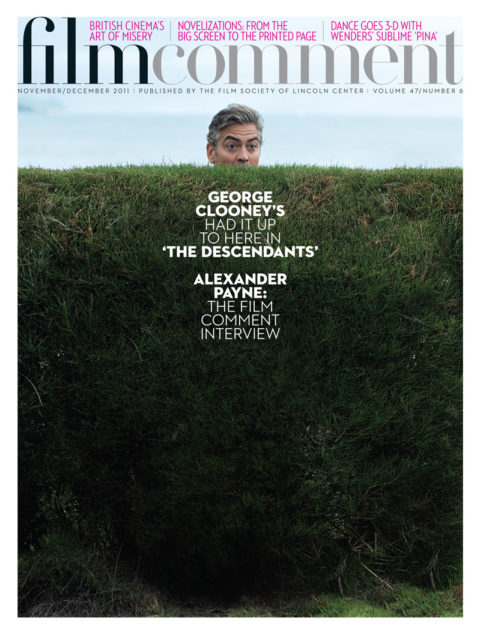The time is ripe for a life of Pauline Kael. Ten years after her passing, her insistent, astute voice continues to resonate in the culture. The Library of America has just published a hefty selection of her best pieces, which makes the case definitively for her mastery as film critic and prose writer. What follows, naturally, is curiosity about the woman herself, such as only a biography can supply. Brian Kellow, a seasoned biographer of Ethel Merman and the Bennett sisters, editor at Opera News, film buff, and Kael admirer, would seem right for the job; and he has written a quite decent, balanced, revealing, and informative book. He has done his research and interviewed just about everyone who knew her (including me). If there is finally something muffled or unsatisfying about the result, it may have less to do with the biographer’s shortcomings than with the difficulties posed by this particular subject.
For starters, Kael was extremely guarded about her private life and changed her versions of the past frequently. The freshest material here, for those who know her public persona well, are the first chapters that take us through her childhood in Petaluma, California, in a community of Yiddish-speaking émigré farmers; her chilly, discontented mother and expansive, adulterous father; her dropping out of college senior year; her first unhappy sojourn in New York City (which crystallized a lifelong dislike of the place); her failure at playwriting; and her love affairs with several gay or bisexual men. “Again, Pauline was making a mistake that heterosexual women in the arts often made: They were surrounded by attractive, bright men, unafraid to engage in emotional discourse, and they mistakenly thought that a passionate friendship could turn into an enduring romance,” writes Kellow. An affair with the experimental filmmaker James Broughton produced a child, Gina, whom Kael raised by herself, Mildred Pierce–like, heroically supporting them with a number of odd jobs, including running a laundry. Gina’s heart condition required expensive surgery, and Kael ended up enticing Edward Landberg, the owner of a local art-house theater, Berkeley Cinema Guild. They had begun as co-programmers. As Landberg tells it: “One day, when I was over at her place, I happened to graze her breast with my hand, and she kind of looked up and said, ‘What have you got to lose?’” Their marriage proved a fiasco, but Landberg agreed to pay for Gina’s operation, which Kellow suspects had been Kael’s motive all along.
By this point she had begun writing program notes for the theater and for Pacifica Radio, then reviews for little magazines, then New Republic, McCall’s, and eventually The New Yorker, where she joined the staff in 1967 at age 48 and reigned for the next 20-plus years. To gauge a sense of Kael’s influence: her first book, I Lost It at the Movies, sold around 150,000 copies, an unimaginable success for a work of film criticism. From here, Kellow takes us through all the familiar high points and flash points: Bonnie and Clyde, Funny Girl, her chummy relations with directors Altman, De Palma, Peckinpah, her falling-out with Woody Allen and Paul Schrader, the Shoah review, the Hollywood gig debacle, her changing cast of Paulettes, and so on.
The problem for Kellow is that, after a certain point, Kael seemed to have had no private life. By the time she was 40 she had given up on men, and even her friendships seemed limited to one topic. “Her existence revolved around going to movies, talking about movies, lecturing on movies, being interviewed about movies.” Anyone who has hung around film critic circles will know that narrowing human thinness and provincialism that can set in when there is no other focus but movie talk. Kellow, with no access to her inner life beyond her reviews, is reduced to slogging through the major releases year by year, offering plot summaries and reporting what Pauline said and how other critics differed. Kellow refrains from adjudicating his opinion, which is a pity; it reduces him to a maitre d’ seating quotes. Occasionally he allows himself to demur, as when he chides Kael for presuming to know Ellen Burstyn’s motives for her performance in Alice Doesn’t Live Here Anymore (“quite out of critical bounds”) or for saying that Claude Lanzmann “‘could probably find anti-Semitism anywhere.’ It was a stunning lapse of judgment, considering that Lanzmann was looking for anti-Semitism in the most obvious of places—the death camps.”
Kael’s fans tend to be idolaters, monotheists: for them she is not merely a good film critic but the film critic, an attitude she encouraged by her frequent disparagement of her colleagues as idiots, schmucks, cowards, and sexless drones. There could be only one valid judgment, especially since she refused to see a film twice; changing one’s mind seemed to her a sign of weakness. Kellow, smitten by her reviews from adolescence, situates himself well within the Kael party line. For instance: “Pauline’s review of Last Tango did more than anything else to date to boost her reputation as the era’s wisest and most searching film critic.” Really? Okay, fine: one would not expect a biographer to be at odds with his subject. But for those who are skeptical that hers is the only true opinion, it makes for a certain claustrophobic predictability.
Kellow shows more independence in assessing Kael’s treatment of her daughter Gina, whose ambitions to become a dancer or a painter she did little to encourage, preferring to keep her on “a silver cord . . . she had also grown accustomed to the steady, dependable role that Gina played—as secretary, driver, reader, sounding board—and she was loath to give her up.” Gina, for her part, was mistrustful of the dynamic she witnessed between Kael and her acolytes. “As Gina often pointed out, Pauline liked to be surrounded by people whose feelings about the arts and politics were close to her own. She often told friends that she found it difficult to form a close bond with someone who disagreed with her about more than three movies.” (No wonder we didn’t become friends.)
I think Kael had as high a critical batting average as any critic of her time. I would not dream of castigating her because she got this or that film “wrong”: it’s the fate of film critics to make many assessments that look questionable in the light of later opinion. Still, it’s instructive to look for patterns in her likes and dislikes. She was an advocate of American studio filmmaking, and increasingly incurious about world cinema. Kellow notes, in an eye-opener: “She was particularly piqued that she had not been able to have an effect on the tastes of most of the senior writers and editors at The New Yorker, who dutifully continued to attend art films by Fassbinder and Bresson that they thought were good for them, and looked askance at her praise for Carrie, The Fury, and The Warriors.” She preferred De Palma to Hitchcock, detested Last Year at Marienbad, and found Badlands “over-intellectualized” and Au Hasard Balthazar “grim.” Kellow concludes that, formidable intellect aside, her life as a critic was “a triumph of instinct over intellect. Her highly emotional responses to art were what enabled her to make so indelible a mark as a critic.”
The paradox was that someone who had such quick access to her emotional responses could be so clueless about her effect on others. Kellow registers bemusement at her surprise when her savage criticisms wounded the recipients. He also shakes his head at her naïve expectation that she could go out to Hollywood and single-handedly make it a more creative place. Gina, who would not consent to be interviewed for the book, nevertheless delivered some trenchant remarks at a memorial tribute that trenchantly, almost devastatingly, captured the commingling of Kael’s strengths and weaknesses:
“As a mother, Pauline was exactly what you would expect from reading her or knowing her. Taste, judgment, being right were crucial. Her inflexibility pleased her. She was right—and that was it. My mother had tremendous empathy and compassion, though how to comfort, soothe, or console was a mystery that eluded her. Pauline tried to make me aware of people’s needs and she taught me to be considerate of other people’s feelings. But when Pauline spoke to someone about their work as if it had been produced by a third party, it had repercussion. There was fallout. In my youth, I watched what she left, unaware, in her wake: flickering glimpses of crushed illusions, mounting insecurities, desolation . . . Pauline’s greatest weakness, her failure as a person, became her great strength, her liberation as a writer and critic. She truly believed that what she did was for everyone else’s good, and that because she meant well, she had no negative effects. She refused any consideration of that possibility and she denied any motivations or personal needs . . . This lack of introspection, self-awareness, restraint, or hesitation gave Pauline supreme freedom to speak up, to speak her mind, to find her honest voice. She turned her lack of self-awareness into a triumph.”
In quoting this speech, Kellow has left it to Gina to connect the dots, which he has been too polite or discreet to do on his own. The book’s subtitle, A Life in the Dark, may allude to the pathos underneath the triumph. Or it may reference the Kane-like testimony of former Paulette Owen Gleiberman, quoted here: “She was a great, fascinating woman who had her dark side.” We all have our dark side, I suppose. In any case, this biography, which invited the gossipy excitement of reading about so many people and movies I knew, so much of my own past, left me feeling sad.
© 2011 by Phillip Lopate








